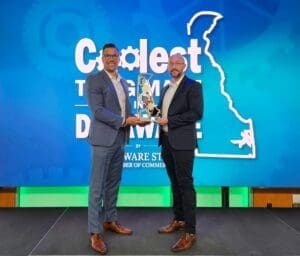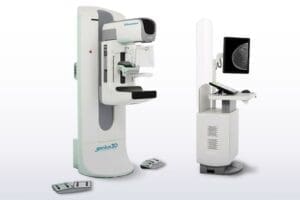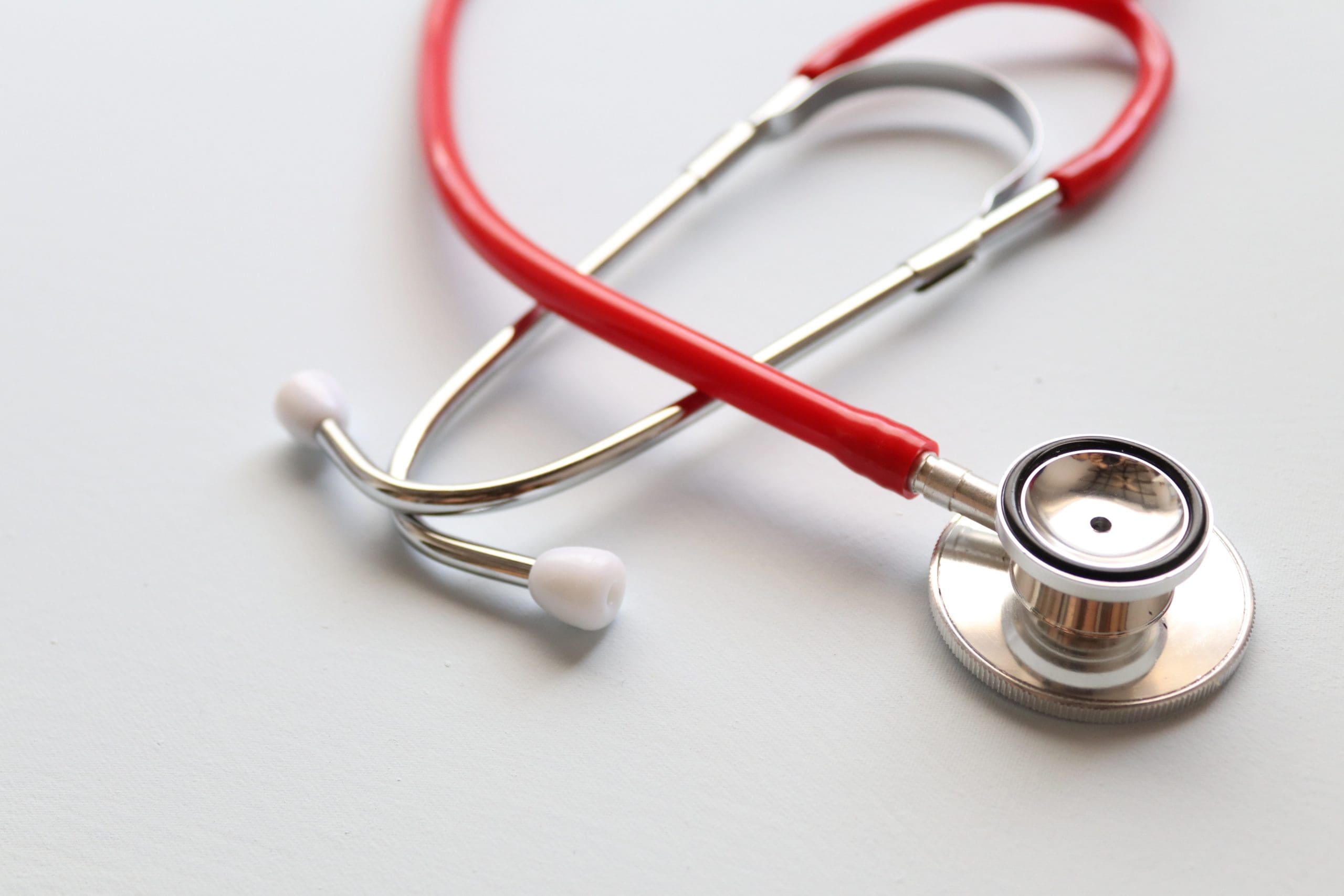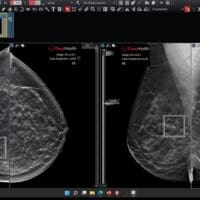

Receiving the Coolest Thing Made in Delaware Award are, from left, Brian Brooks, senior director of operations, and Michael Washko, senior manager of Strategic Manufacturing for Hologic Inc.
A device that helps detect breast cancer has been named the Coolest Thing Made in Delaware.
Hologic Inc.’s 3Dimensions Mammography System, designed to provide higher quality images and a more comfortable screening procedure for women, won the state’s first Coolest Thing contest.
It bested ILC Dover‘s spacesuit, Bloom Energy‘s Bloom Energy Servers and Edgewell’s Personal Care Playtex Sports Tampons in a contest created by Delaware State Chamber of Commerce and the Delaware Manufacturing Association to highlight the state’s manufacturing sector and promote it as a career path.
While company officials had hoped their life-saving screening machine would do well, they were pleasantly surprised it did ultimately win, considering the massive homegrown competition.
The online contest ultimately had more than 40 products from 20 companies nominated for consideration. About 20,000 members of the public voted on their favorites in a March Madness style bracket system.
It narrowed the number of contestants to 16, then 8 and then a Top 4, with winners announced last month.
Brian Brooks, senior director of operations for Hologic, and Michael Washko, senior manager of strategic manufacturing, said that when Hologic’s name was announced, they turned to look at each other in delight.
“The big thing for me is getting our name out there,” said Washko. “We’re not a household name right now. We’re not a Gore or DuPont where everyone kind of knows who we are, so hopefully we can use this to get our name out there.”
And it’s a key time for the company to be doing that.
The company has been making the detector — one of three components for its machines — in Delaware for more than a decade. But it recently decided to move all its production lines from Danbury, Connecticut to Newark.
The 3Dimensions Mammography System will be the first to move, and Hologic is looking to fill 120 jobs, from entry-level manufacturing associates and up to chief, AI and research and development engineers. The entry-level jobs are open to high school graduates and up.
“We’ve got a wide, wide net we’re casting for talent, and we’ve been successful thus far at staffing up, but we’ve still some way to go as we’re rounding out the new work innovation center that we’re creating,” Brooks said.


Hologic’s 3Dimensions Mammography System was designed to provide higher quality images and a more comfortable screening procedure for women.
Coolest Thing company
Hologic was founded in 1985, focusing on improving women’s health and well-being through early detection and treatment, and it’s been in Delaware for a quarter of a century.
In 1999, Hologic bought Digital Radiography Corp., a business that grew out of DuPont’s Medical Products Diagnostic Imaging Business.
Since that time, the Newark site has been manufacturing mammography imaging detectors, utilizing a sophisticated glass-coating process.
Its 3Dimensions Mammography System was introduced in 2011 and can be found around the globe.
The company estimates it saves the lives of around 27,300 women per year. That equates to one life for every 250 women screened on their systems.
The system it uses is called tomosynthesis, and it offers the highest resolution detection capabilities on the market, Brooks said.
“We have a lot of scientific evidence about how it leads to earlier detection of breast cancer, which obviously has much better outcomes for those women impacted,” he said.
The machines also employ artificial intelligence, which essentially allows them to compare a woman’s scan with thousands of others, and issue recommendations for screening radiologists to check.
A human couldn’t do that, because he or she would have to do it image by image, Brooks said.
There’s a national and global shortage of radiologists, and AI helps them get their jobs done.
“And that’s something that Hologic has done for years and we’re consistently updating that as our dataset gets larger,” Brooks said.


The final bracket in the Coolest Thing contest shows a little about the breadth of the nominations.
Win for women
“Winning this award is a reminder that in the world of manufacturing, success is not measured solely by the products we create, but by the impact we have on the lives of others,” Brooks said in a press release after the win was announced.
DSCC President Mike Quaranta agreed.
“This innovative device not only contributes to the strength of our state’s manufacturing sector, but also empowers women with a vital tool for early detection and better health outcomes,” he said. “Hologic’s commitment to creating life-saving technologies and supporting Delaware’s workforce makes them truly deserving of this award.”
Brooks also said the award was a testament to the hard work, dedication and unwavering commitment of every team member.
The win likely was directly because of their votes.
Hologic’s internal marketing campaign regularly reminded its employees about the Coolest Thing contest and Brooks credited them with advocating for their company by casting the ballots that beat much larger companies.
IN THE NEWS: A 30-acre New Castle County park off Hercules Road is in the works
The company is involved in women’s healthcare in many ways.
It has a program that sends mobile mammography trucks into underserved and impoverished areas in U.S. cities to help battle breast cancer in women who may not have the means — financial or otherwise — to get the testing themselves.
Hologic publishes an annual global women’s health index that looks at many factors of women’s health around the world, not just breast care.
“When women suffer, so does everyone around them,” says the headline on the survey.
It works with Gallup to create the index and then also looks at the index to see how it can utilize the results to help work with local and national government agencies to advocate for women’s health.
“We’re using those findings to say, OK, other than breast cancer, what are the areas women are underserved in nationally and globally,” Brooks said. “And how can we work better with business and government to advocate for all women?”


Betsy Price is a Wilmington freelance writer who has 40 years of experience.
Share this Post








